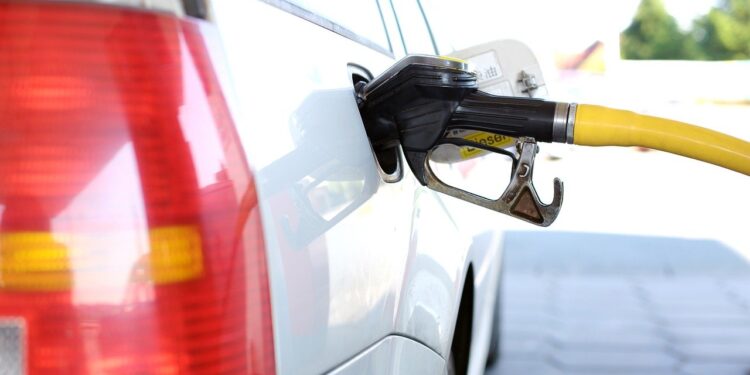10 Fuel Card Management Tips to Get the Most from your Fuel Cards

Fuel cards have benefits for all parties concerned. It means that drivers don’t have to carry cash around, fleet managers track cars better, and company owners save because of discounted fuel prices. However, like any tool, using it correctly is what guarantees the maximum benefits. In this article, we tell you the best tips for effectively managing a company fuel card program to get it to work for you. Read on to learn more.
1. Assign Your Fuel Cards Correctly
If done correctly, fuel card assignment can be the basis for organizing your fleet. How you assign them is how you will track the vehicles using their PINs, numbers, and names.
The main disadvantage of failing to correctly assign your vehicles is that you will need to order replacement cards, something that makes your work more tedious. The old card will need to be cancelled, a new one ordered, and then you have to distribute them. The majority of fuel card companies use three options to assign fuel cards. These include:
Assigning card to driver name: This works in a situation where one driver is in charge of the vehicle at all times.
Assigning card to vehicle description: Also works in the same way as the above option where the car driver is one in most of the cases.
Floating Pin / Vehicle Card: This involves assigning the fuel card to a vehicle and then a unique number (PIN) getting assigned to the driver. It works best in situations where drivers are switched. All that a driver needs is to input their pin and they can activate any vehicle.
2. Create A Driver Fuel Card Policy
Come up with a document holding your staff accountable for fuel purchased using fuel cards. This way, you send a message that drivers must use cards responsibly at all times.
3. Create Fuel Card Controls To The Minimum Fuel Envelope Of The Vehicle
Fuel card controls are probably the best advantage for these cards. It is among the top reasons that attract fleet car managers to use fuel cards. Unfortunately, not many people know how to fully exploit these controls to their benefit.
Make sure you set each fuel card to the strictest control level without hampering the capability of the driver to fill up. For example, if the capacity of your track is 75 gallons, set the maximum transaction to be 75 gallons as the driver can never fill up more than this capacity. Also, if your drivers work only on weekdays, disable the card so that they cannot purchase fuel on Saturday or Sunday.
These are just a few examples of the controls you can set. Controls allow you to be more efficient and avoid fraud.
4. Use Purchase Notifications to Monitor Fuel Transactions
You can set up your emails to alert you anytime a driver uses a fuel card to purchase fuel. This enables you to immediately receive transaction details after each filling up. It enables you to identify any suspect transactions right away.
If you don’t want these purchase alerts to cram your email, setting up a folder for purchase alerts will ensure these messages go to one particular place and not all over. Having these messages in one central place also makes it easy to follow your transactions.
There is also an online reporting tool to help you review these transactions by any card, vehicle, period, or driver.
5. Deactivate Out-of-Service Cards
You may have recently replaced a truck in your fleet, or a driver has quit. If any of this happens, you need to immediately cancel the card. It avoids a situation where an active card can into unwanted hands.
6. Make Use of Fleet Management Reports
A fuel card is a rich resource for crucial data. Whether you want monthly fuel costs reports, IFTA reports, or mpg reports, you can all get them in one place. You can view the reports online or even download them for offline viewing.
7. Connect with GPS or Accounting System Using API Data
Some fuel card programs offer API or application program interface integration to allow you automatically integrate fuel data into your GPS or accounting system.
Not only does this give you more data points in the GPS system, but also saves you the headache of having to import fuel reports manually into your accounting software.
8. Create Fuel Department for Invoices
If your business has different vehicles for management and sales departments over and above your normal operating fleet, you can separate the cards in your invoices to get the total fuel purchases for the vehicles in one department. This is an important way of allocating costs by departments. The same feature can also be used for separating invoices based on various business branches.
9. Use the Mobile App of your Fuel Card to Find Acceptable Fuel Stations
Most fuel cards will come with a mobile app for finding accepting fuel locations. Ask your employees to install the app on their phones and learn how to use it. You can use the app to direct drivers to fuel stations if they have a problem finding accepting locations.
10. Troubleshoot Fuel Card Problems Using Authorization Reports
It is possible to view authorization reports through your online fuel card management account that shows fuel card declinings as well as the reasons for refusing them. This way, you know if the rejection resulted from a user error or if there is a problem with the station or the card.
Conclusion
Fuel cards help businesses to save on fuel costs and curb fraud. But to harness these benefits, you must know how to manage them. The good news is that these are simple things you can do without requiring any special tool or knowledge. They include setting controls, troubleshooting problems from your online account, deactivating cards no longer being used, and coming up with a robust fuel card policy for your company.









